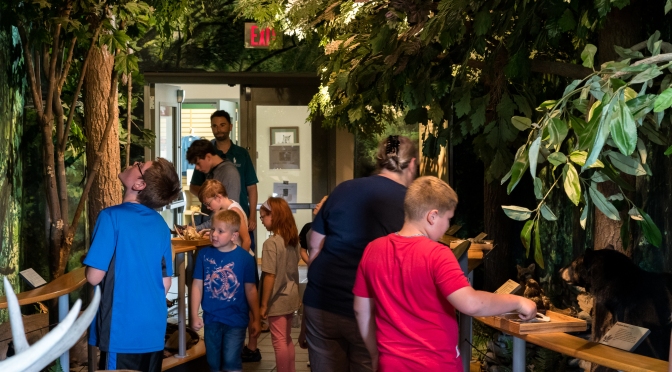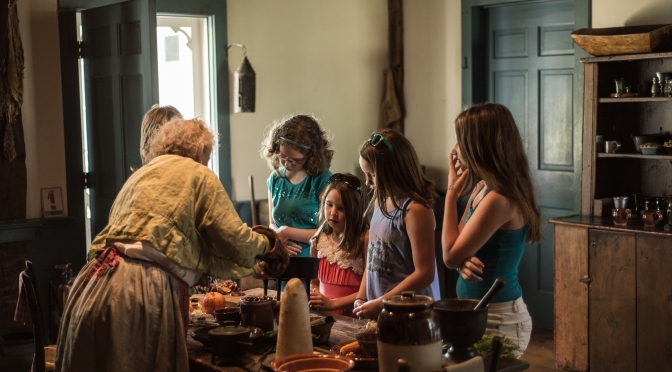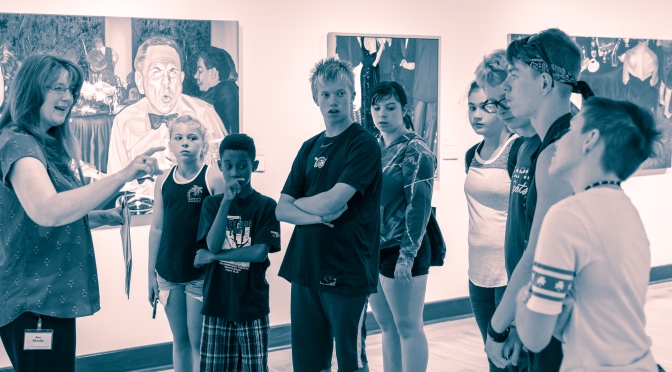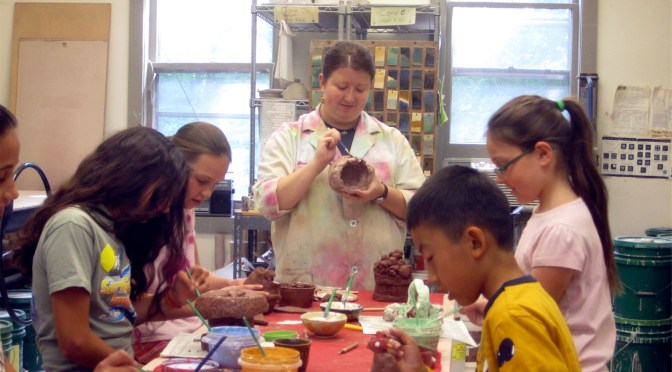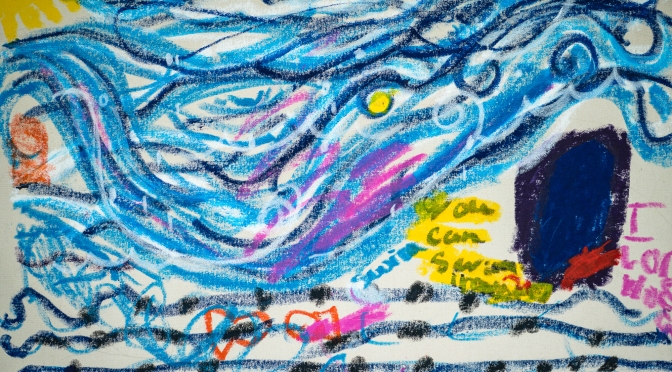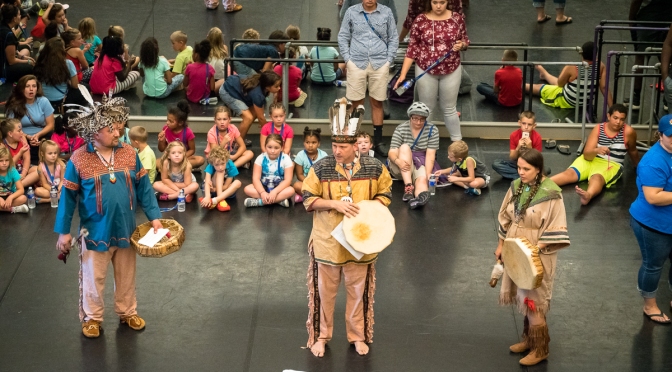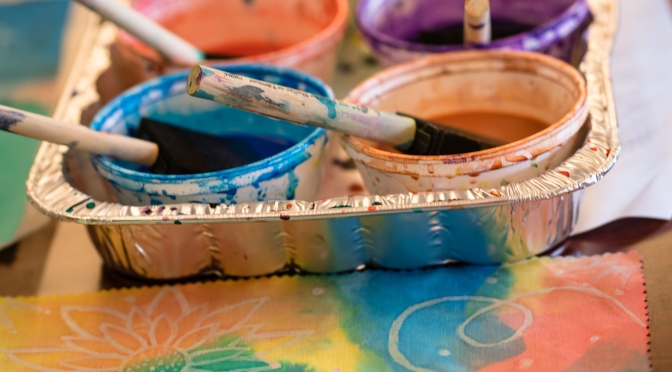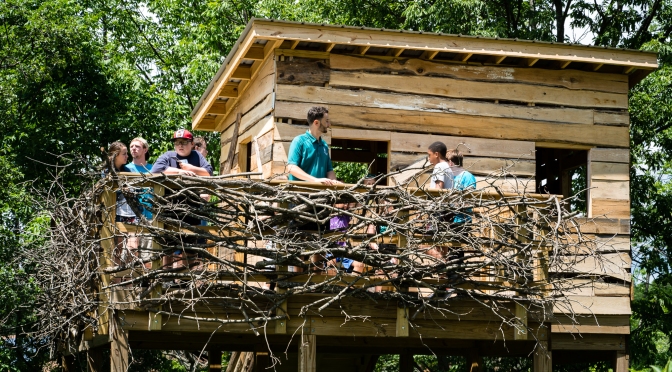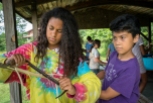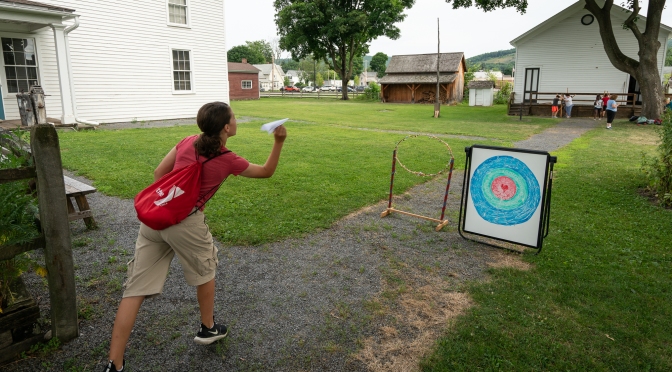By Amy Ruza
This week, youth visited The Rockwell Museum to experience ART IN ACTION! We looked at art using our senses and played movement-themed games.
In the Nancy Lamb: Through the Artist Lens exhibition, we looked at large scale oil paintings that depict people in different social environments. The artist, Nancy Lamb captures people in candid poses and with different facial expressions. These moments, when we are not posing for the camera, capture our distinctive personalities that make us unique and special.
“I am trying to catch the true spirit of the moment” – Nancy Lamb
Youth were asked to react to the paintings by imitating poses, creating small actions and responding to the emotions portrayed. We stood in a circle around selected paintings and imitated each other’s movements in silence. It was fun bending and twisting our bodies in a theatrical way to interpret the art.

All Photos Courtesy of Dan Gallgher Photography

All Photos Courtesy of Dan Gallgher Photography

All Photos Courtesy of Dan Gallgher Photography

All Photos Courtesy of Dan Gallgher Photography

All Photos Courtesy of Dan Gallgher Photography

All Photos Courtesy of Dan Gallgher Photography
Then, we played the “Object Game.” A basket of small random objects was passed out. Students walked and carefully looked around the gallery to select an artwork that they thought connected to their object and then placed their object in front of their selected artwork. The activity was an engaging way for the youth to slow down and look closely at the artwork to make creative connections to art and their objects.
It was fascinating to listen to the youth share about why they paired their object with a particular artwork. In this game there was no right or wrong pairing. It was all about making an imaginative connection to objects and art.

All Photos Courtesy of Dan Gallgher Photography

All Photos Courtesy of Dan Gallgher Photography
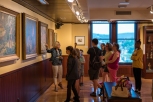
All Photos Courtesy of Dan Gallgher Photography

All Photos Courtesy of Dan Gallgher Photography

All Photos Courtesy of Dan Gallgher Photography

All Photos Courtesy of Dan Gallgher Photography
We looked at the handkerchief installation, Needle-and-Bowl by artist Melissa Vandenberg. For this antigravity installation, we all turned our heads up to the ceiling to see the hundreds of hanging handkerchiefs. We talked about what a handkerchief is used for – sweat, tears and SNOT! These handkerchiefs literally held microscopic pieces of a person’s DNA in their fibers. Don’t worry, the ones on display have been washed.
We talked about how the modern day disposable tissue replaced the handkerchief about 100 years ago, so most people don’t carry around hankies anymore. We noticed the different colors, patterns and ornamentation in the elegantly hanging handkerchiefs. We pondered, why would something that is going to get dirty be so pretty?
The display of handkerchiefs memorialize, or help us remember, their users. Each handkerchief in the installation represents a person and their unique life.

All Photos Courtesy of Dan Gallgher Photography

All Photos Courtesy of Dan Gallgher Photography

All Photos Courtesy of Dan Gallgher Photography

All Photos Courtesy of Dan Gallgher Photography
In the Museum’s Education Center, students designed and painted their own special one-of-a-kind handkerchief inspired by nature, gardens, and the art from the Museum collection. We talked about the places we enjoy visiting to experience nature, the types of plants that grow there, the animals that live there, and what you see in the sky above or in the dirt below your feet. The handkerchiefs were full of colorful patterns and nature symbols that expressed the individuality of each student.
During the project process, we had to wait for the designs to dry before adding a wash of color. While waiting, youth played a game called Picaria, a traditional tic-tac-toe style board game played by the Zuni Tribe of the American Southwest. Learning games that are similar to the ones we are familiar with was a great way to expose students to different cultures and how certain games can have multiple versions.

All Photos Courtesy of Dan Gallgher Photography

All Photos Courtesy of Dan Gallgher Photography

All Photos Courtesy of Dan Gallgher Photography

All Photos Courtesy of Dan Gallgher Photography

All Photos Courtesy of Dan Gallgher Photography
The gallery and project experiences aimed to help build students’ confidence, encouraged problem-solving and fostered a greater appreciation for arts and culture. Experiencing the museum using our whole bodies and all of our senses provided a different perspective on how we can appreciate art and the world around us.
I look forward to seeing all the brightly colored handkerchiefs on display at the upcoming Garden of Fire Festival on August 9 at CareFirst when we all come together to celebrate the youth accomplishments.

